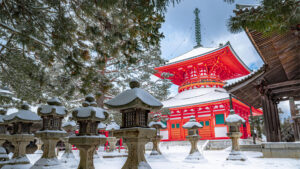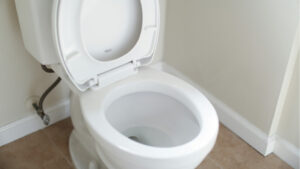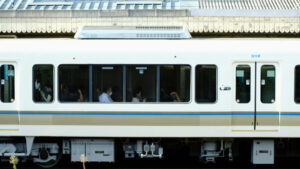In Japan, smoking regulations have become increasingly strict in recent years. Smoking is now restricted in many places, including public areas, restaurants, and hotels. Since the rules and cultural expectations differ from those in other countries, it is important for travelers to understand them in advance.
This article provides a clear explanation of the rules and etiquette for smoking in Japan, including how to purchase tobacco products and how to find designated smoking areas.
To avoid trouble and ensure a comfortable trip, be sure to review this guide before visiting Japan.
Contents
Basic Smoking Rules in Japan
Smoking in Public Places Is Generally Prohibited
Rules at Stations, Commercial Facilities, and Parks
In Japan, smoking is generally prohibited in public places such as train stations, commercial facilities, and parks to prevent secondhand smoke and maintain cleanliness. Especially in urban areas, smoking is not allowed even outdoors unless it is in a designated smoking area.
At train stations, the entire premises are usually smoke-free, and smoking is only permitted in clearly marked smoking areas located inside or outside the ticket gates. Similarly, shopping malls, department stores, and other large commercial facilities may have designated indoor or outdoor smoking spaces, which must be used.
Some parks are completely smoke-free depending on the local government, so it’s important to check signs and notices at each location.
Penalties for Violations
Smoking outside of designated areas or discarding cigarette butts improperly may result in penalties under local ordinances. For example, in Chuo Ward, Tokyo, smoking on the street can lead to a fine of 2,000 yen.
Enforcement is carried out by local officials or security personnel, and foreign tourists are not exempt. Saying “I didn’t know” is not accepted as an excuse, so it’s essential to follow the rules even while traveling.
Differences in Local Regulations
In addition to Japan’s national Health Promotion Law, each local government enforces its own ordinances such as street smoking bans and littering prevention laws. As a result, smoking rules may vary from one city or ward to another, even within the same prefecture.
For example, areas like Chiyoda Ward in Tokyo, Osaka City, and Kyoto City have especially strict rules against smoking while walking near tourist sites. These rules often include clearly defined penalties. Travelers are advised to check the smoking regulations of the places they plan to visit in advance to avoid issues.
Expansion of Indoor Smoking Bans and the Revised Health Promotion Act
Smoking Rules in Restaurants
With the enforcement of the revised Health Promotion Act in April 2020, most restaurants in Japan have adopted a policy of “complete indoor smoking bans.” As a result, smoking areas inside cafes, restaurants, and izakaya (Japanese pubs) have been eliminated, and smoking is no longer allowed indoors in general.
However, some establishments have designated “smoking rooms” or “heated tobacco-only rooms” as exceptions, where smoking is permitted. In these rooms, eating and drinking are either prohibited or only allowed for heated tobacco use, depending on the room type.
Restaurants are required to display signs such as “No Smoking” or “Heated Tobacco Room Available” at the entrance. Many of these signs include pictograms with multilingual guidance, making it easier for foreign visitors to understand. It is recommended to check the signage before entering to ensure a smooth experience.
Smoking Rooms in Hotels and Accommodations
In hotels and traditional inns (ryokan) in Japan, smoking and non-smoking rooms are typically separated. When making a reservation, it is important to confirm whether the room is labeled “smoking” or “non-smoking.”
An increasing number of hotels now offer only non-smoking rooms. In such cases, guests must use designated smoking areas within the facility. Some high-end ryokan provide rooms with private terraces where smoking is permitted, but this varies by establishment.
Please note that smoking on balconies or verandas may be prohibited, even in smoking rooms. Shared spaces such as lobbies and hallways are generally non-smoking, and violating the rules may result in cleaning charges or penalties.
Exceptions for Tobacco Shops and Smoking-Permitted Venues
While indoor smoking is generally prohibited under the revised Health Promotion Act, certain exceptions are allowed for establishments that meet specific criteria. Examples include tobacco specialty stores and small bars or snack pubs that are officially registered as “smoking-permitted venues.”
These establishments must have been operating as of April 1, 2020, and meet conditions such as having capital under 50 million yen and a customer area of less than 100 square meters. In such places, smoking is permitted, but individuals under 20 years of age are not allowed to enter.
Additionally, some tobacco stores have designated “trial smoking areas” or in-store smoking booths where smoking is allowed. However, stricter regulations in recent years have led to a gradual decline in the number of these venues.
Use of Electronic Cigarettes and Heated Tobacco Products
Differences from Traditional Cigarettes
Electronic cigarettes (vapes) and heated tobacco products (such as IQOS, Ploom, and glo) differ from traditional cigarettes in that they do not use fire. Instead, they generate vapor or aerosol without combustion. In Japan, heated tobacco products are widely used, and it is common to consume nicotine by heating tobacco leaves.
On the other hand, vape devices that heat liquid to produce vapor—commonly used overseas—are subject to stricter regulations in Japan. The sale of nicotine-containing liquid is prohibited, so only nicotine-free products are legally available within the country.
Because of this, it is important to understand that just because a device is an “e-cigarette,” it does not mean it can be freely used or purchased in Japan.
Restrictions on Where They Can Be Used
Even for electronic or heated tobacco products, usage is subject to the same regulations as traditional cigarettes in Japan. Indoor use is only allowed in designated “heated tobacco-only rooms.” Outdoor use is also restricted, and using such devices outside designated smoking areas is often prohibited.
Using these products while walking, or smoking in tourist areas where smoking is banned, can lead to fines or complaints. Some smoking areas may be labeled “heated tobacco only,” meaning traditional cigarettes are not allowed. Be sure to check signage carefully and follow local rules.
Restrictions on Bringing Foreign Devices into Japan
Travelers should be cautious when bringing electronic or heated tobacco devices into Japan. Nicotine-containing e-liquid is considered a pharmaceutical product in Japan. Even for personal use, importing quantities exceeding one month’s supply may require customs declaration or approval from the Ministry of Health, Labour and Welfare.
In principle, up to one month’s worth of nicotine liquid can be brought into Japan for personal use without prior permission. However, advance verification is highly recommended. Additionally, devices sold in Japan are often designed for domestic specifications, so foreign-made devices may not be compatible.
In some cases, devices or liquid may be confiscated at customs. To avoid trouble, be sure to check Japan’s import regulations before traveling.
How to Find Smoking Areas in Japan
Using Smoking Areas in the City
Searching with Map Apps
In many urban areas of Japan, smoking on the street is prohibited, and smokers must use designated smoking areas. These smoking areas are usually outdoor spaces specifically set up for this purpose, but they are not always easy to find.
To locate them, map applications and smoking area finder apps can be very helpful. For example, typing “喫煙所” or “Smoking Area” into Google Maps may show nearby spots where smoking is allowed. There are also Japan-specific free apps like “喫煙所マップ” (Smoking Area Map) that let you find the nearest smoking location from your current position.
Some apps include user-posted photos and reviews, which can help you choose a clean and comfortable smoking spot.
Examples Near Train Stations and Shopping Malls
At major train stations and large commercial facilities, outdoor smoking areas are commonly provided. For instance, Tokyo Station, Shinjuku Station, and Osaka Station often have small smoking spaces located within the station premises or near the building entrances.
Shopping malls and department stores also frequently have smoking areas on rooftops or in corners of parking lots. You can usually find their locations by checking facility directories or floor maps.
These smoking areas are typically well-maintained, and may be equipped with seating and ashtrays. However, the number and exact location of these spaces vary by facility, so asking a staff member, “Where is the smoking area?” is also a good option.
Smoking Etiquette and Trash Disposal
Japanese smoking areas have certain etiquette rules to ensure a comfortable environment for all users. First, smoking outside the designated area is strictly prohibited. Additionally, it is common courtesy to maintain space between yourself and others and to avoid blowing smoke toward other people.
After smoking, be sure to completely extinguish the cigarette and dispose of it in the provided ashtray. Throwing cigarette butts on the ground is considered highly inappropriate in Japan and may result in penalties.
If there is no trash can at the outdoor smoking area, it is ideal to carry a portable ashtray and take your waste with you. During busy times, be considerate—take turns using the space and avoid staying for extended periods.
How to Find Smoking-Friendly Cafes and Bars
Pay Attention to Signs like “Smoking Allowed” or “Separate Smoking Areas”
In Japan, restaurants and cafes are legally required to display clear signage regarding their smoking policy. Signs such as “Smoking Allowed,” “Non-Smoking,” and “Heated Tobacco Only” are typically shown at the entrance, on menus, or on the establishment’s website.
If you wish to smoke indoors, look for places with signs indicating “Smoking Allowed” or “Smoking Room Available.”
The label “Separate Smoking Area” means that the venue has designated areas for smokers and non-smokers. However, note that separation may not be complete, and smoke may still be noticeable in some cases—so those sensitive to smoke should take extra care.
More establishments now include English signage, such as “Smoking Allowed,” “Non-Smoking,” or “Smoking Room Available,” which makes it easier for foreign visitors to identify smoking policies.
Differences Between Chain Stores and Independently Owned Shops
Major café and restaurant chains in Japan—such as Starbucks, Doutor, and Saizeriya—are generally completely non-smoking. Some Doutor and Renoir locations may have heated tobacco-only seating or partially separated smoking areas, but they are limited in number.
In contrast, independently owned cafés and bars may offer more flexible smoking options. Some of these places even allow smoking throughout the entire venue, which can be a plus for smokers.
However, many of these venues restrict entry to individuals over 20 years old and are only permitted to allow smoking if they are officially registered as a “smoking-permitted facility.” Therefore, it’s important to confirm the policy in advance.
How to Search for Smoking-Friendly Places in English
To find smoking-friendly venues that support English, use map and gourmet search apps that offer English-language options. Some useful methods include:
- Google Maps: Try searching with keywords like “Smoking Allowed Cafe Tokyo” to discover suitable locations.
- Tripadvisor: User reviews often include information on smoking policies and environments.
- Gurunavi (English version) or Tabelog: These Japanese restaurant search platforms offer English interfaces and filters for smoking availability.
Even if a shop has English-speaking staff, it is still a good idea to double-check the smoking policy by asking before entering. This will ensure a smooth and comfortable experience.
Smoking Policies in Hotels and Accommodations
What to Check Before Booking
In Japan, hotels and traditional inns (ryokan) generally distinguish clearly between smoking and non-smoking rooms. When booking, be sure to confirm whether the room is labeled as “smoking” or “non-smoking.”
Most booking websites display this information in the room description. If the label is unclear, it’s best to write your smoking preference in the remarks section or contact the property directly to confirm.
Especially in urban areas, more accommodations are becoming fully non-smoking. In such cases, designated smoking areas are usually provided in common spaces for guests who smoke.
Smoking on Balconies
While balconies or verandas may appear to be outdoor spaces, they are considered part of the building premises and are often subject to smoking restrictions. In non-smoking rooms, smoking on the balcony is typically prohibited and may result in cleaning fees or fines.
Even in smoking-permitted rooms, some accommodations advise against smoking on balconies. Always check the hotel’s specific rules. As a general rule, if there is no ashtray provided, smoking on the balcony is not allowed.
Things to Keep in Mind in Smoking Rooms
In smoking rooms, guests may use regular cigarettes and heated tobacco products. However, it is important to be mindful of odor and ash to avoid inconvenience for the next guest.
Always use the provided ashtray, and never throw cigarette butts on the floor or leave burn marks. Good manners in smoking rooms help maintain a pleasant environment for everyone.
How to Purchase Tobacco in Japan and Age Restrictions
Buying from Vending Machines
Time Restrictions on Use
Most tobacco vending machines in Japan are programmed to shut down during late-night and early-morning hours (typically from 11:00 PM to 5:00 AM). This restriction is in place to prevent minors from purchasing cigarettes during those times.
Because of these limitations, purchasing tobacco from convenience stores or tobacco retailers is generally more reliable and convenient.
Differences Between Cigarette and Heated Tobacco Vending Machines
Traditional cigarette vending machines primarily sell paper-wrapped cigarettes. However, in recent years, machines dedicated to heated tobacco products—such as IQOS, Ploom, and glo—have become increasingly common.
These machines may offer devices and sticks specific to heated tobacco brands. If you are looking to buy heated tobacco products, it is often easier to find them at electronics stores, tobacco specialty shops, or duty-free shops at major airports.
Purchasing Tobacco at Convenience Stores and Specialty Shops
Age Verification Process
In Japan, it is illegal for anyone under the age of 20 to purchase tobacco. At convenience stores and tobacco specialty shops, age verification is always required. During checkout, a confirmation message will appear on the register screen asking, “Are you over 20 years old?” The customer must tap “Yes” to proceed.
In some cases, staff may ask for identification such as a passport or residence card. This applies to foreign travelers as well—if you appear to be underage, you will likely be asked to present valid ID.
How to Choose a Brand and Typical Prices
Japan offers a wide variety of tobacco brands. For traditional cigarettes, popular options include Marlboro, Mevius, Camel, and Lucky Strike. For heated tobacco products, IQOS, Ploom, and glo are commonly available.
At convenience stores, tobacco products are displayed behind the counter with numbered labels. Customers typically order by number (e.g., “Number 20, please”). Prices vary by brand and type, but as of 2025, a pack of regular cigarettes usually costs around ¥600–¥700, while a pack of heated tobacco sticks is about ¥500–¥600.
Some stores display English-language brand charts or photos, making it easier for foreign customers to choose.
Duty-Free Limits and Restrictions on Taking Tobacco Abroad
If you plan to take tobacco purchased in Japan back to your home country, be aware of both Japan’s duty-free limits and the import restrictions of your destination country. While Japan does not typically tax tobacco upon departure, exceeding the allowed quantity may result in taxes upon arrival at your destination.
Generally, travelers are allowed to purchase up to 200 cigarettes (one carton) duty-free at the airport. Exceeding this amount may incur customs duties or taxes depending on your country’s regulations.
Also, note that heated tobacco devices with built-in lithium batteries are often prohibited in checked baggage. Always carry them in your hand luggage. It’s important to check the regulations of your destination in advance.
Handling of Foreign Tobacco Products
Where to Buy Imported Tobacco
In Japan, some tobacco specialty shops, import goods stores, urban bars, and duty-free shops sell foreign cigarette brands. These are more commonly found in major cities with many international visitors, such as Tokyo, Osaka, and Kyoto. Brands like “Marlboro Red” and “Lucky Strike” from Western countries are often available.
At international airports such as Haneda and Narita, you can also find foreign-made cigarettes, heated tobacco devices, and cartridges in duty-free shops. However, stock may be limited, so it’s best to contact the store in advance if you’re looking for something specific.
Regulations on Distribution in Japan
Japan has strict laws regarding tobacco products, including regulations on the import and sale of foreign tobacco. In particular, nicotine-containing liquids for electronic cigarettes (VAPE) are classified as “pharmaceutical products” and are generally prohibited for sale within Japan.
As a result, nicotine-containing VAPE products commonly available overseas cannot be legally purchased in Japanese stores. All e-cigarettes sold domestically are nicotine-free. Additionally, Japan imposes high taxes on tobacco, making imported products more expensive than in other countries.
Customs Declaration Requirements
Foreign travelers bringing tobacco into Japan must declare it at customs if the quantity exceeds the duty-free allowance. The typical limits are:
- Regular cigarettes: up to 200 sticks (1 carton)
- Cigars: up to 50 sticks
- Heated tobacco: up to the equivalent of 10 packs (200 sticks)
If you exceed these limits, you must declare the excess at the airport customs counter, and applicable taxes will be imposed. Failure to declare may result in penalties or fines.
Additionally, when bringing nicotine-containing e-liquid into Japan, travelers may do so without Ministry of Health, Labour and Welfare approval if it is within the amount considered for “personal use” (approximately one month’s supply). For larger quantities, prior approval may be required. It’s recommended to check Japan’s customs and ministry guidelines in advance for a smooth entry.
Smoking Culture and Etiquette in Japan
Social Attitudes Toward Smokers
Situations Where Consideration for Non-Smokers Is Required
In recent years, growing health awareness and concerns about secondhand smoke have led to stricter social attitudes toward smoking in Japan. Smokers are expected to be highly considerate of whether their smoke or smell may inconvenience others, not only in public but also in private settings.
For example, in places like restaurants, around train stations, tourist spots, and event venues, smokers should pay close attention to their surroundings—checking if there are children or elderly people nearby, or if wind may carry smoke toward others.
Being mindful of non-smokers in a society where smoking is becoming less common is essential to avoid conflict and maintain good relationships.
Precautions in Business Settings
In Japan’s business culture, there used to be a concept known as “smoking communication,” where informal conversations happened at smoking areas. However, most workplaces are now entirely smoke-free, and smoking is increasingly viewed negatively.
If you need to smoke before or after a meeting, be careful not to carry the smell of smoke on your clothes or hair, as many people are sensitive to it. This can affect your professional image.
During business meals, whether you can smoke or not depends on the atmosphere and your counterpart’s preferences. Always be polite and ask, “May I smoke?” before lighting up.
Etiquette at Home and in the Car
Smoking etiquette is also important at home and inside cars. In Japan, smoking has become a source of family disputes, especially in households with young children or elderly members—many of which have adopted a completely smoke-free policy.
In cars, smoking in poorly ventilated spaces is considered harmful to health, and even private car owners increasingly opt for “non-smoking” vehicles.
If non-smokers such as family members or passengers are present, always ask for permission before smoking. Ideally, use a portable ashtray and deodorizing spray to reduce smoke and odor as much as possible.
Things Foreign Visitors Should Be Aware Of
Overlooking No-Smoking Zones in Tourist Areas
In many tourist areas across Japan, smoking is completely prohibited to preserve cleanliness, ensure safety, and show consideration for other visitors. For example, places like Gion in Kyoto, Nakamise Street in Asakusa, and Komachi Street in Kamakura have designated no-smoking zones where not only smoking while walking but smoking in general is banned, even outdoors.
However, these no-smoking zones may lack signage in English or other foreign languages, leading some visitors to unknowingly break the rules. When visiting tourist spots, be sure to check entrance signs, ground markings, and cautionary notes on maps. Only smoke in designated smoking areas.
Examples of Trouble Caused by Rule Violations
There have been cases where visitors were reprimanded by locals or other tourists, or even approached by staff or police, due to unintentional smoking in prohibited areas. In one instance, a smoker in a no-smoking zone was photographed and publicly criticized on social media.
Discarding cigarette butts irresponsibly also poses a fire hazard. In some areas, violators may be fined on the spot. Language barriers can lead to further misunderstandings, so it’s important to be aware that in Japan, “following the rules” is seen as a sign of good manners and cultural respect.
Respecting Rules as a Way of Honoring Japanese Culture
In Japan, not disturbing others in public spaces is a deeply held value, and this is strongly reflected in smoking etiquette. Quietly smoking in designated areas and properly disposing of cigarette butts is more than just good manners—it’s considered an act of cultural respect.
By following these rules, foreign visitors help build trust with locals and are welcomed as “well-mannered travelers.” When visiting Japan, showing respect for local culture—including smoking regulations—through your actions is essential.
Understand Japan’s Smoking Rules and Act with Cultural Respect
In Japan, smoking is strongly governed by the principles of “consideration for others” and “adherence to established rules.” Smoking outside designated areas or carelessly discarding cigarette butts can result not only in fines but also damage the trust between you and those around you.
At train stations, parks, restaurants, and accommodation facilities, clearly marked smoking areas are provided. It’s essential to follow the rules specific to each location. Carrying a portable ashtray and observing proper manners in public spaces are also key aspects of responsible smoking behavior.
By taking personal responsibility and acting with awareness of cultural differences, your stay in Japan will be more comfortable and enjoyable. Whether you smoke or not, let’s aim for a society where everyone can coexist considerately and peacefully.












